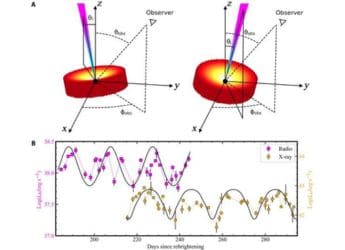- Home
- Science
- Science News
- Dinosaurs Likely Started Living in Herds About 190 Million Years Ago; Formed Groups Based On Age, Body Size
Dinosaurs Likely Started Living in Herds About 190 Million Years Ago; Formed Groups Based On Age, Body Size
The researchers studied the skeletal specimens of 80 individuals, ranging from embryos to eggs and infants to fully-grown adults.

Fossils studies were so far unable to offer insights into a dinosaur's social behaviour
In 1993, Steven Spielberg's Jurassic Park introduced the world to dinosaurs like never before. While researchers were interested in the reptile that occupied Earth hundreds of millions of years ago, the movie made people curious about it. Since then, technological advancements have let scientists uncover deep-buried facts about dinosaurs. Today, whatever we know about them, we know through fossils. There still remained one area where fossil studies were unable to reveal much about — the social behaviour of dinosaurs. However, a set of recently discovered fossils has provided a rare insight into the social lives of one dinosaur — the herbivore Mussaurus patagonicus.
After studying the fossils, found in a sag basin in southern Patagonia (Argentina, South America), scientists concluded that the occurrence of many fossils of dinosaurs at different life stages within a square kilometre suggests they lived in herds nearly 190 million years ago (the fossils have been dated to 192 million years ago). The researchers also think the social cohesion of the Mussaurus may have helped it survive longer.
“Most specimens were found in a restricted area and stratigraphic interval, with some articulated skeletons grouped in clusters of individuals of approximately the same age. Our new discoveries indicate the presence of social cohesion throughout life and age-segregation within a herd structure, in addition to colonial nesting behaviour,” the researchers said.
The researchers studied the skeletal specimens of 80 individuals, ranging from embryos to eggs and infants to fully-grown adults. They also found evidence of individuals having formed age-based subgroups within the community. This was not unique, however.
Many existing animals with notable differences in body size segregate themselves based on age. Living in a tightly knit group of the same body size allows animals to better arrange for their food and other behaviour.
Get your daily dose of tech news, reviews, and insights, in under 80 characters on Gadgets 360 Turbo. Connect with fellow tech lovers on our Forum. Follow us on X, Facebook, WhatsApp, Threads and Google News for instant updates. Catch all the action on our YouTube channel.
Related Stories
- Samsung Galaxy Unpacked 2025
- ChatGPT
- Redmi Note 14 Pro+
- iPhone 16
- Apple Vision Pro
- Oneplus 12
- OnePlus Nord CE 3 Lite 5G
- iPhone 13
- Xiaomi 14 Pro
- Oppo Find N3
- Tecno Spark Go (2023)
- Realme V30
- Best Phones Under 25000
- Samsung Galaxy S24 Series
- Cryptocurrency
- iQoo 12
- Samsung Galaxy S24 Ultra
- Giottus
- Samsung Galaxy Z Flip 5
- Apple 'Scary Fast'
- Housefull 5
- GoPro Hero 12 Black Review
- Invincible Season 2
- JioGlass
- HD Ready TV
- Laptop Under 50000
- Smartwatch Under 10000
- Latest Mobile Phones
- Compare Phones
- Redmi Note 15 5G
- Redmi Note 15 Pro 5G
- Redmi Note 15 Pro+ 5G
- Lava Play Max
- Poco C85 5G
- Honor Magic 8 Lite
- Jolla Phone
- Realme P4x 5G
- Asus ProArt P16
- MacBook Pro 14-inch (M5, 2025)
- OnePlus Pad Go 2
- Poco Pad M1
- Just Corseca Skywatch Pro
- Honor Watch X5
- Acerpure Nitro Z Series 100-inch QLED TV
- Samsung 43 Inch LED Ultra HD (4K) Smart TV (UA43UE81AFULXL)
- Asus ROG Ally
- Nintendo Switch Lite
- Haier 1.6 Ton 5 Star Inverter Split AC (HSU19G-MZAID5BN-INV)
- Haier 1.6 Ton 5 Star Inverter Split AC (HSU19G-MZAIM5BN-INV)

















